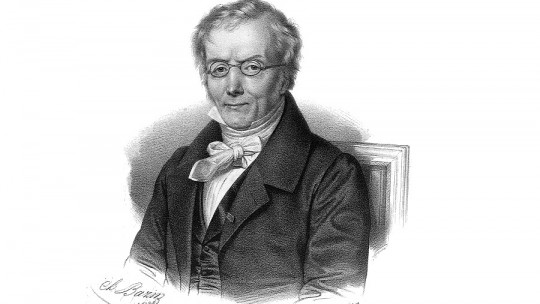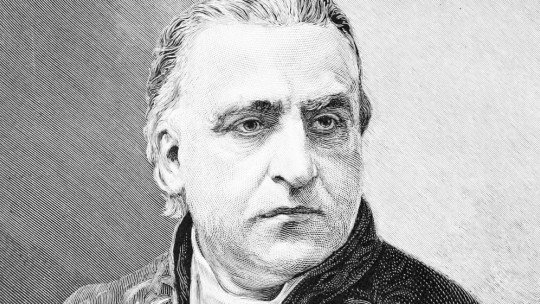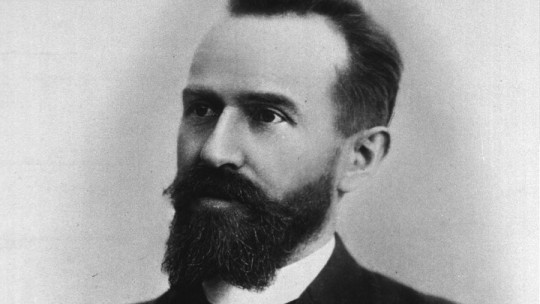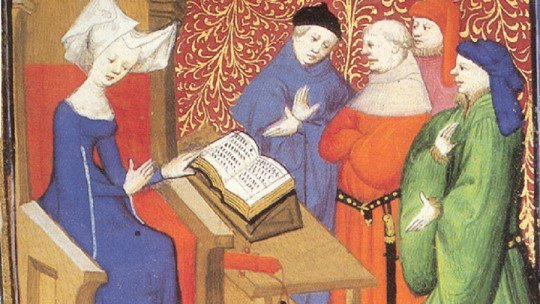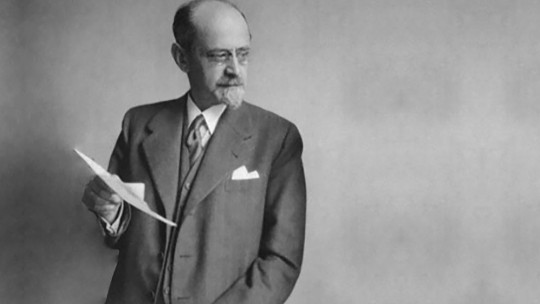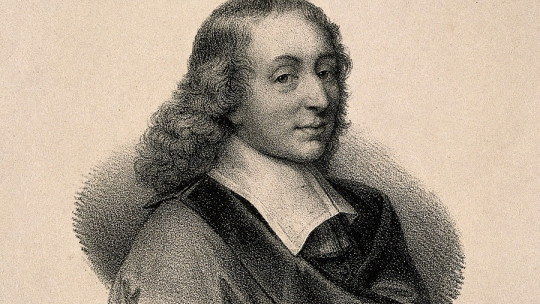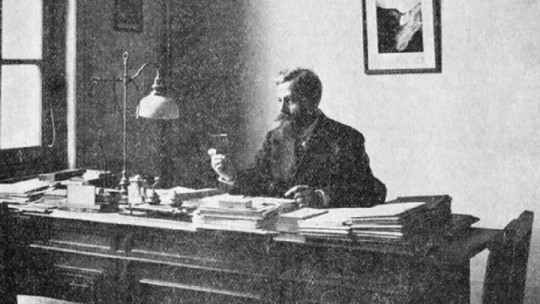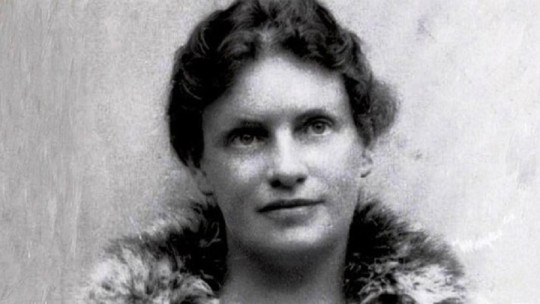One of the great figures of psychiatry, in addition to Philippe Pinel, was his disciple Jean-Étienne Dominique Esquirol.
The figure of this doctor is not limited to the simple fact of being one of the first psychiatrists, but also to having contributed to the systematic study of mental disorders in addition to the humanization of those who suffer from them.
We are going to see the figure of such an interesting French alienist doctor, the importance of his work and his contributions to the development and recognition of psychiatry as a specialized science through a biography of Jean-Étienne Dominique Esquirol
Biography of Jean-Étienne Dominique Esquirol
Jean-Étienne Dominique Esquirol born in Toulouse, France on February 3, 1772 within a very large family.
His father worked in an institution where both patients with mental disorders and criminals were admitted, without distinction between them. Although this may seem surprising to us, at that time the idea that crime was the product of some type of madness was well established.
Although it would be this first approach with mental disorders that would make Esquirol, years later, decide to lean towards psychiatry, the truth is that Its beginnings were of religious vocation In his first years of training, the young Esquirol would study ecclesiastical studies, entering the Saint-Sulpice seminary in Issy.
Of all of them, surely inspired by the outbreak of the French Revolution (1789) he would abandon his theological studies to begin a career in medicine in 1792. These studies would be carried out in several cities, such as Toulouse, Montpellier and Paris, finishing them in 1798.
Professional life
In 1899 Esquirol would arrive in Paris and begin to frequent the service of Jean-Nicolas Corvisart at La Charité and, especially, that of Philippe Pinel at the well-known La Salpêtrière. It would be in that place where he would establish a very good relationship with Pinel, Esquirol becoming his favorite student.
A few years later, in 1805 Esquirol would present his thesis, Les passions considérés comme causes, symptômes et moyen curatifs de l’alienation mentale. This work gave her some renown, causing her to take charge of the division of mentally ill women at La Salpêtrière in 1811.
In 1820 he had the honor of being named a member of the Academy of Medicine and, in 1826, it would be the Council of Public Hygiene and Health of the department of the Seine.
After the death of Pierre-Paul, Royer-Collard would occupy the position of chief physician in the Royal Asylum of Charenton, near Paris, in 1825. Among the patients of this institution was the Marquis de Sade himself. Esquirol would exercise his medical direction until the date of his death, December 12, 1840.
Esquirol’s contributions to psychiatry
As a disciple and collaborator of Pinel Jean-Étienne Dominique Esquirol is known for having followed in his same footsteps, both in the most professional aspect of psychiatry and in its most humanitarian sense. Scab made several reform attempts when it came to assisting people with mental disorders seeing them in a more human way and contributing to the separation between people with a mental disorder and people who were criminals for various non-psychopathological reasons.
One of Esquirol’s best-known actions would be to send the Ministry of the Interior the report “Des établissements consacrés aux aliénés en France et de moyens de les améliorer”, with a clear intention of making the French state understand the need to help people with mental disorders.
Another of Esquirol’s contributions, made together with Guillaume Ferrus and Jean-Pierre Falret, would be his participation in the preparatory work of the Law on Aliens of 1838 known for being one of the first legislative texts that regulates public psychiatric care.
The figure of Esquirol is also that of a great academic, contributor to the work of Dictionary of medical sciences , edited by Charles-Joseph Panckoucke. Esquirol would be in charge of writing practically all the entries related to psychiatry, among them: Demonomania, Delirium, Dementia, Madness, Erotomania, Fury, Idiotism, Hallucinations, Suicide, Houses of the Alienated, Monomania, Mania and Melancomy.
Classification of madness
It would be within the “Dictionnaire des sciences Médicales” work in which Esquirol would present his system on “Madness”, classifying it into five large “genres”:
1. Lipemania (formerly melancholy)
Lipemania, formerly known as melancholy, would be about a delusion about an object or a small number of objects with a predominance of sad or depressed mood.
2. Monomania
Monomania would be delirium that is limited to a single object or small group of them with happy and expansive symptoms, such as excitement.
3. Mania
Mania would be treated as any delirium that extends to all kinds of objects, with excitement.
4. Dementia
Dementia would involve deterioration of the ability to think A progressive dysfunctionality of higher functions.
5. Idiocy
Idiocy, also called idiocy or imbecility, refers to the modern idea of intellectual disability. It would be the fact that the person has never presented normal intellectual abilities, below what is expected.
Hallucination concept
In addition to its system of madness, it is very remarkable. the clarification that Esquirol gives about the concept of hallucination Until then, hallucinations were generally considered diseases of the imagination, not simply signs or symptoms of underlying mental disorder.
Even on more than one occasion the term was used as a synonym for delirium. Scab established the clear difference between illusions and hallucinations in addition to treating it as a symptom that, although clinically important, is not sufficient to diagnose a mental disorder on its own.
Monomania
Finally, we have as Esquirol’s great contribution to psychiatry the formulation of the concept of “monomania”. As we have commented before in its classification system, this clinical picture is defined as a delirium that is limited to a single object or a small group of them, with excitement and predominance of a joyful or expansive passion.
The patient becomes obsessed with an idea, presenting an excessively high mood That is, it would be equivalent to a manic episode in current diagnostic systems.
However, what is striking about his concept of monomania is that Esquirol indicates that the person with this psychological problem, apart from the partial delirium that this episode leads to, feel, think and act normally
This may seem like a trifle, but it is thanks to this formulation that it allowed the figure of the psychiatrist to be seen as that of a doctor highly specialized in psychopathology, being able to identify “crazy people who do not seem to be crazy”, something that a doctor with general knowledge I would not be able to.
This was especially important when intervening in courts of law given that certain psychopathologies, such as pyromania, kleptomania, and homicidal monomanias were a potential danger to society and general practitioners did not know how to properly identify them.
His last and great work
The last and great work of Jean-Étienne Dominique Esquirol was The mental illnesses considered by the medical, hygienic and medical-legal reports in 1838. He would publish this work just two years before his death in 1840 and, in itself, Esquirol himself acknowledged not being as systematic as he would have liked.
This document was actually a broad compilation of previously published monographic works, either independently or as contributions to the “Dictionnaire des sciences Médicales”. The reason why it took him 15 years to write this document was that, although he did not write as much as he wanted, he did have an intense professional career, both in asylums and in the forensic field, helping to understand the extent to which people deserve a decent treatment, no matter how “disordered” they are.

